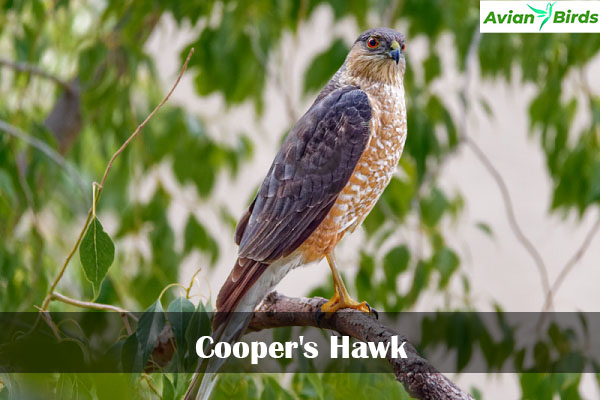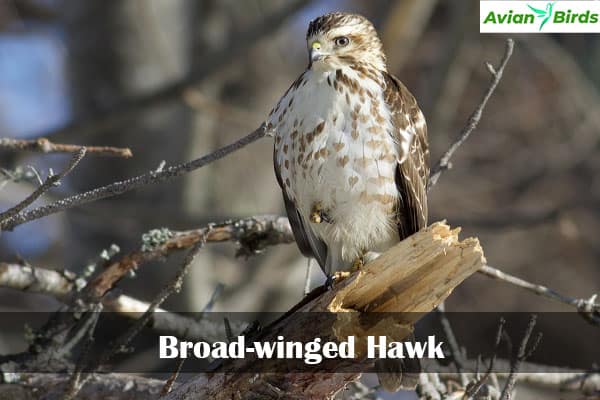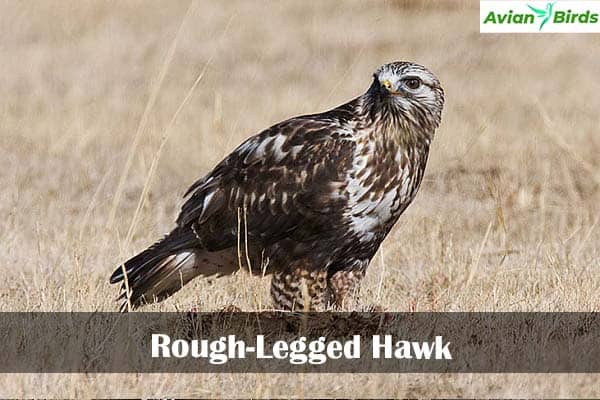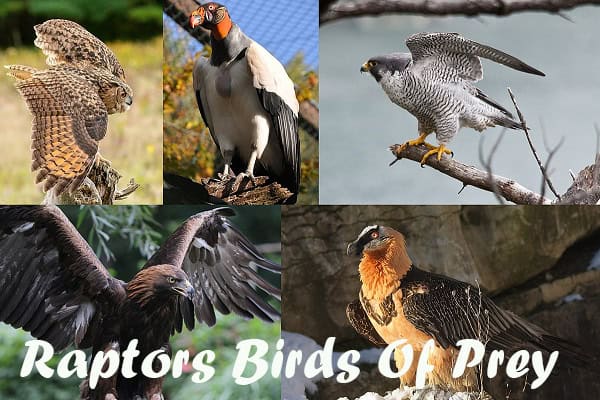6 Types of Hawks In Arizona That You Can See & Identify
Did you know Arizona is home to over fifteen hawks of species? It’s a haven for hawk lovers. The Red-Tailed Hawk, for example, has a huge wingspan of up to 52.4 inches.
We’ll dive into Arizona’s hawk world. We’ll look at their unique traits, habits, and homes. We aim to deepen our love and knowledge of these birds. So, if you love birds or just want to learn, let’s explore Arizona’s hawks together.
Introduction to Hawks in Arizona
Arizona is a great place for hawk lovers. Its many hawks attract bird watchers from all over. The area has deserts and forests perfect for different hawks.
Each hawk helps keep the environment balanced. It’s important to know and value their roles.
Arizona’s hawks include the sharp-shinned hawk, the smallest, and the red-tailed hawk, which is common in the state. The ferruginous hawk is the largest true hawk in Arizona. It has a white rump patch that makes it easy to spot.
You can see over 15 types of hawks in Arizona’s Sonoran Desert. These include the Cooper’s Hawk and Harris’s Hawk. They add beauty to our skies and show interesting behaviors.
Harris’s Hawks hunt together, showing teamwork. This makes bird watching in Arizona even more special. It helps us appreciate these amazing birds more.
Hawks of Arizona: A Diverse Family
Arizona has many hawk species, each adapted to our beautiful landscapes. The Red-Tailed, Cooper’s, and Sharp-Shinned Hawks are common here. They fill our skies and are key to our ecosystems.
These hawks have different ways of hunting and nesting. This makes them interesting for birdwatchers and nature lovers.
Overview of Common Species
Red-tailed and Sharp-Shinned Hawks are often seen, but the Harris’s Hawk is special because of its family hunting. The hawks work together to catch big prey.
In Tucson and nearby, the Harris’s Hawk thrives in cities, which shows how well it adapts to new places.
Rare Hawks in Arizona
Arizona also has rare hawks like the Gray Hawk and Ferruginous Hawk. Thanks to conservation, the gray hawk’s numbers have grown, and there are now 200 nesting pairs.
The Ferruginous Hawk is the biggest in North America. It needs special care for its habitat, and we must protect its homes to help these birds survive.
1. Red-Tailed Hawk
The Red-tailed Hawk is a well-known bird in North America, especially in Arizona. It lives there all year. Its looks make it easy to spot, making it a hit with bird watchers.

This hawk is 19.7 to 25.6 inches long. Its wingspan is 44.9 to 52.4 inches. It has broad wings and a reddish-brown tail. The belly is light, with dark streaks on the back.
Physical Characteristics
The Red-tailed Hawk has a strong beak and sharp eyes. Its talons are powerful. Its color ranges from light to dark brown.
These hawks glide well, using wind currents to climb high. They look for food below.
Diet and Hunting Behavior
Red-tailed Hawks eat small mammals, birds, reptiles, and carrion. Also, They have great eyesight. They can spot food from far away.
They soar and then dive down to catch their prey. This shows their hunting skill.
Nesting Habits and Conservation
Red-tailed Hawks build nests in high trees using sticks and leaves. They lay two to three eggs, which hatch in about 30 days.
They form strong pairs during breeding and show off during courtship. Efforts to protect their homes are important, helping keep these birds around Arizona.
2. Cooper’s Hawk
The Cooper’s Hawk is a stunning bird that thrives in cities. It has a body length of 14 to 20 inches and a wingspan of 24 to 35 inches. Its blue-gray back and reddish breast bars are striking. Adult hawks have red eyes, making them easy to spot.

Appearance and Features
The Cooper’s Hawk has rounded wings and long tails, which help it fly fast and catch small birds. Its feathers also help it blend in, especially when it’s perched high up.
Adaptability to Urban Environments
Cooper’s Hawks are very adept at living in cities. They make homes in parks and near houses, nesting in tall trees and poles and watching for food.
During nesting season, they are very protective. They fight off bigger birds to keep their territory safe.
Dietary Preferences
Cooper’s Hawks mainly eat small birds, which they chase down quickly. They also often sneak up on birds at feeders.
They are very good at hunting in cities. This shows how amazing Cooper’s Hawks are and how important they are to city life.
3. Sharp-Shinned Hawk
The Sharp-Shinned Hawk, known as Accipiter striatus, is fascinating for birdwatchers. It’s North America’s smallest hawk, growing 9.4 to 13.4 inches long. Its short wings and squared tail help it move quickly in forests.
Spotting a Sharp-Shinned Hawk is tricky. It’s secretive and has camouflage feathers. This helps it hide well in its surroundings.

Identification Tips
Here are key points for identifying a Sharp-Shinned Hawk:
- Size: It’s small, with a wingspan of up to 22.1 inches.
- Coloration: Its feathers are slate-gray on the back and reddish on the chest. This helps it blend in.
- Flight Patterns: Its flight is fast and agile. It looks like a blur in the woods.
Nesting Behavior
Sharp-shinned Hawks nest in dense forests. They build their nests using sticks and leaves. Although solitary, they form strong pairs during breeding.
Nests are high up in trees, which keeps them safe from threats. Conservation efforts help protect their homes, which are key to their success.
4. Broad-Winged Hawk
The Broad-Winged Hawk is famous for its amazing migration. It’s a hit among birdwatchers and nature fans. This hawk nests in eastern North America and flies to South America for winter. Knowing their migration paths helps protect them.

Migratory Patterns
Every year, we see Broad-Winged Hawks migrate in huge flocks. They fly through many areas, showing why we must save their habitats. Thanks to tracking tech, we learn more about their long journeys.
Nesting and Feeding Habits
In the breeding season, Broad-Winged Hawks nest in eastern U.S. forests, including Arizona. They pick high spots in big trees for safety. They eat insects, small mammals, and reptiles, changing what they eat based on location.
5. Rough-legged Hawk
The Rough-legged Hawk is a magnificent bird that visits us from November to April. It travels thousands of miles from the Arctic to Arizona’s warmer climate. This visit lets us see how it adapts to warmer habitats.

Seasonal Presence in Arizona
In Arizona, we can see the Rough-legged Hawk in open areas like prairies. These birds love places where they can easily hunt. They come in two colors: light and dark. The dark phase is better in cloudy weather, and the light phase is better in sunny days.
Diet Adjustments During Winter Visits
In Arizona, the Rough-legged Hawk eats small rodents and birds. In good years, it can have up to seven young. But in bad years, it might not breed at all.
Learning about the Rough-legged Hawk’s winter habits shows us how important it is to protect their homes. Their amazing migration and ability to adapt remind us of the need to save their habitats. Watching these birds can inspire us to help protect them.
| Aspect | Details |
|---|---|
| Seasonal Visits | November to April in Arizona |
| Main Diet During Winter | Small rodents and occasional birds |
| Breeding Areas | Arctic tundra |
| Color Morphs | Light phase and dark phase |
| Positive Prey Years | Up to seven young can be produced |
| Main Threats | Habitat loss, collisions, and shooting |
6. Northern Goshawk
The Northern Goshawk is a remarkable predator. It is easily recognized by its physical prowess and distinct features. It is the largest member of the Accipiter genus. Its impressive wingspan and striking appearance make it a superior hunter.

Distinct Characteristics
The Northern Goshawk has a robust build. Males are about 22 inches long with a wingspan of 39 to 41 inches. Females are around 24 inches long and have a wingspan of 41 to 45 inches.
Adults have striking red or orange eyes. They have a slate-gray upper body and pale underparts with dark barring. These features make the Northern Goshawk visually stunning and help it blend into its surroundings.
Habitat and Hunting Techniques
The Northern Goshawk lives in mature coniferous and mixed forests in Arizona’s Mogollon Rim and White Mountains. The dense cover in these areas helps the Northern Goshawk stay hidden while hunting.
The Northern Goshawk is agile and powerful. It preys on medium-sized birds and mammals. Its diet is mostly birds and mammals, showing its adaptability and efficiency as a hunter.
| Feature | Description |
|---|---|
| Length | Males: 22 inches; Females: 24 inches |
| Wingspan | Males: 39-41 inches; Females: 41-45 inches |
| Diet | 21%-59% mammals, 18%-69% birds, also reptiles and invertebrates |
| Habitat | Mature coniferous and mixed forests |
| Egg Laying | 2-4 eggs, incubation lasts 30-32 days |
| Fledging | Young fledge at approximately 40-45 days |
Read More🐦Related Articles:
| Hawks in Massachusetts |
| Owls In Oregon |
| Owls in New Jersey |
| Owls in Minnesota |
| Common Shelduck: Colorful Coastal Duck Species |
Frequently Asked Questions
Q1. What is the most common hawk in Arizona?
The most common hawk in Arizona is the Red-tailed Hawk.
Q2. Are there sparrow hawks in Arizona?
Yes, the American Kestrel, often called a sparrow hawk, is found in Arizona.
Q3. What is the rarest type of hawk?
The rarest type of hawk is the Ridgway’s Hawk, though it is not native to Arizona.
Q4. What is the difference between a falcon and a hawk?
Falcons are generally faster with pointed wings, while hawks have broader wings and are built for soaring.







